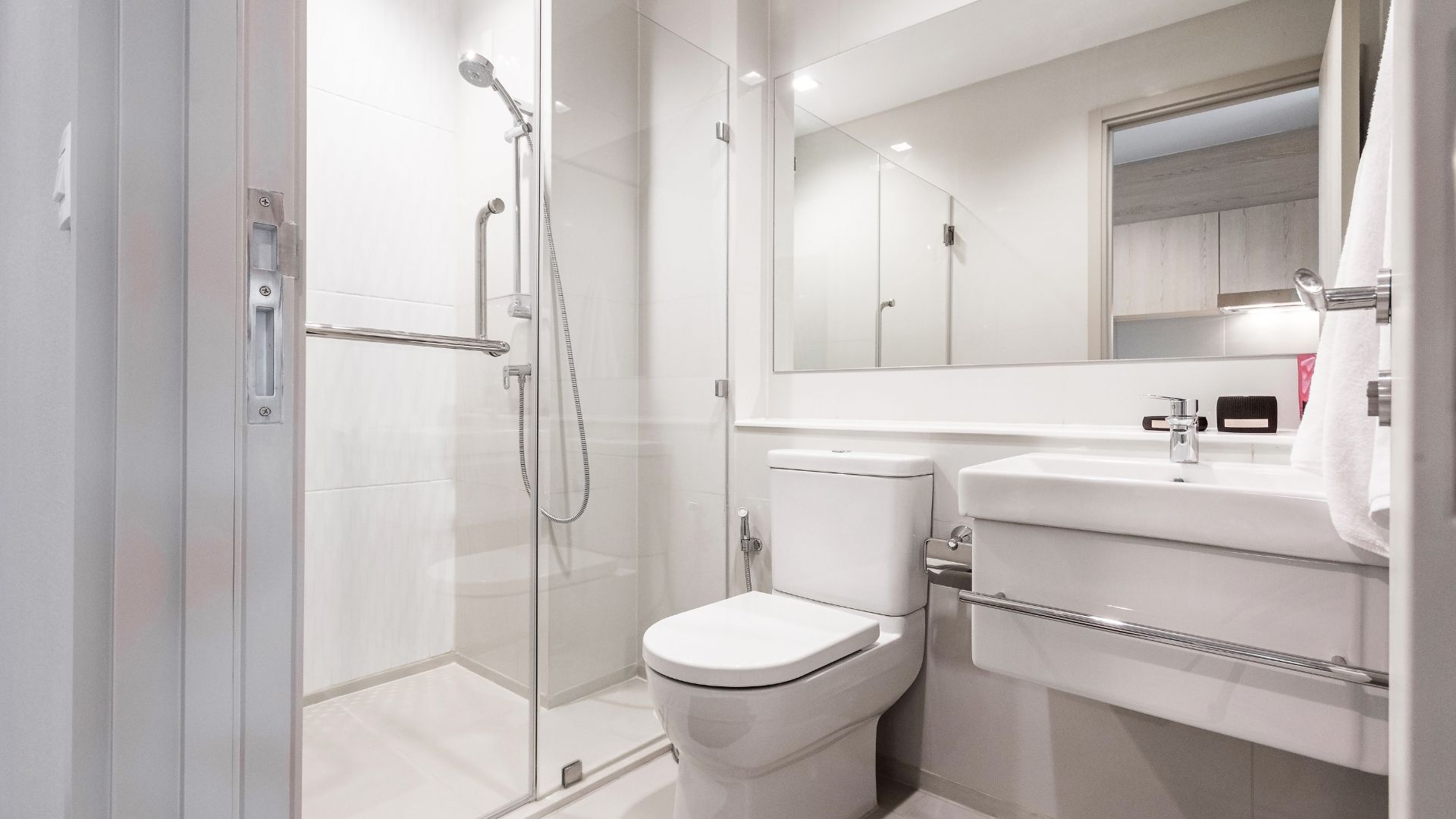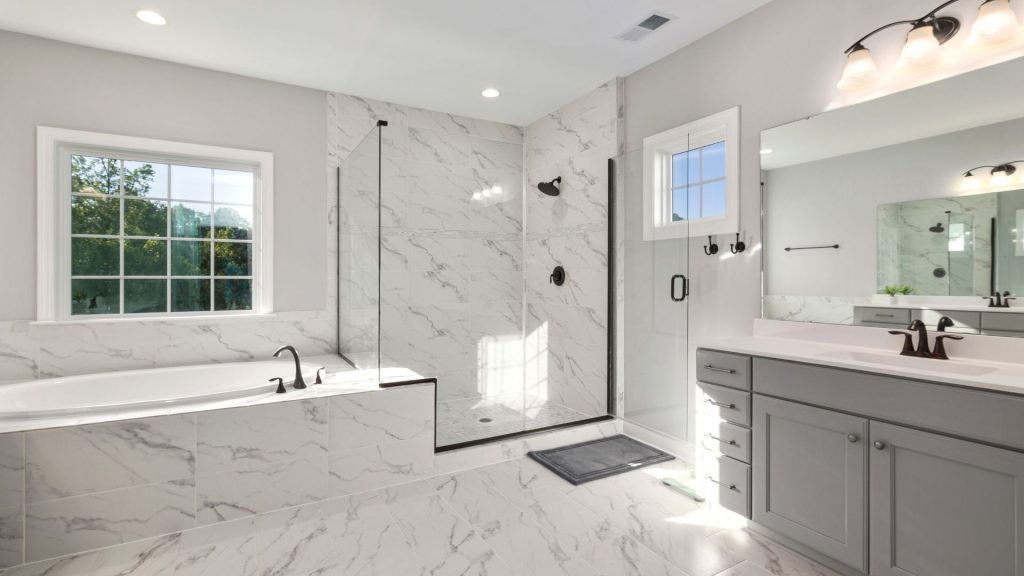Waterproofing is a critical component of any bathroom remodel, essential for protecting your home from the pervasive threats of water damage and mold. These issues can compromise not only the structural integrity of your home but also the health of its inhabitants. Effective waterproofing measures can prevent such problems, ensuring that your bathroom remains a safe, functional, and aesthetically pleasing space for years to come.
In this post, we will explore a variety of waterproofing solutions tailored to different needs and bathroom layouts. From the selection of the right materials to the application techniques and maintenance tips, we will cover all the essentials that ensure your bathroom stands up to moisture and water exposure. This comprehensive guide aims to equip you with the knowledge to make informed decisions about waterproofing during your next bathroom remodel.
Understanding Waterproofing

Waterproofing in bathroom remodeling refers to the process and materials used to protect water-sensitive areas from moisture. Key areas that need attention include the shower enclosure, bathroom floors, walls around bathtubs, and any backsplash areas. Effective waterproofing in these areas is crucial to avoid the detrimental effects of water seepage, such as peeling paint, warping, and the growth of mold and mildew.
Identifying signs of water damage in your existing bathroom can guide your remodeling efforts. Symptoms such as loose tiles, discolored grout, a musty smell, or visible mold growth are clear indicators that current waterproofing measures are insufficient. Addressing these issues during a remodel not only enhances the longevity and appearance of your bathroom but also improves its overall safety.
Preparatory Steps for Waterproofing
Before applying any waterproofing materials, it’s vital to properly prepare your bathroom to ensure the effectiveness of the waterproofing process. This includes thoroughly cleaning and drying the areas to be treated and ensuring that surfaces are smooth and free from debris that could prevent the adhesion of waterproofing materials. It’s also important to address any existing damage such as cracks or holes, as these can undermine the integrity of the waterproofing layer.
Preparation extends to choosing the right waterproofing materials that align with your bathroom’s specific needs. This selection process involves understanding the varying demands of different bathroom areas and the types of exposure they face. Areas that are frequently wet, like shower stalls, require more robust waterproofing solutions compared to areas that experience occasional splashes.
Waterproofing Materials and Products
There is a range of materials available for waterproofing a bathroom, each with its own set of advantages. Liquid waterproofing membranes are a popular choice due to their ease of application and effectiveness. These membranes create a seamless barrier that molds to the surface, providing excellent protection against moisture. Sheet membranes, on the other hand, offer a pre-formed layer of protection but require precise installation to ensure complete coverage without gaps.
For areas that are highly susceptible to water exposure, such as shower floors and walls, cement backer boards provide a durable and mold-resistant substrate that supports further waterproofing. These boards can be covered with a waterproofing membrane for maximum protection. Sealants and silicones are also crucial in finishing the waterproofing process, particularly around edges and fixtures, where they seal joints and prevent water from penetrating behind tiles and other surfaces.
Techniques for Effective Waterproofing
Applying waterproofing correctly is as important as choosing the right materials. When using liquid membrane products, it’s essential to apply them evenly and allow sufficient drying time between coats. Care must be taken to extend the coverage to slightly beyond the areas of direct water exposure for comprehensive protection. Sheet membranes require precise cutting and fitting, especially around corners and fixtures, to maintain an impermeable barrier.
For tile installations, using a waterproof adhesive or mortar is critical for securing tiles while also providing an additional layer of moisture protection. Ensuring that grout is properly applied and sealed will further enhance the waterproof characteristics of tiled areas. Additionally, paying close attention to the manufacturer’s guidelines for each product will help achieve the best results and durability from your waterproofing efforts.
Professional Tips and Best Practices
Experts in bathroom remodeling stress the importance of not cutting corners when it comes to waterproofing. One of the best practices is to always overlap sheets of waterproofing membrane and seal all seams with a quality sealant. This technique prevents any potential for water to seep through overlaps or edges. Additionally, ensuring that all surfaces are level and smooth before applying any waterproofing materials is critical for avoiding future water pooling, which can lead to leaks.
Another tip from professionals is to regularly inspect your bathroom for signs of water damage or leaks, even after a remodel. Early detection of issues such as tile lifting or grout cracking can allow for timely repairs before water damage becomes extensive. This proactive approach not only maintains the integrity of your bathroom’s waterproofing but also extends its longevity and appearance.
The Role of Ventilation in Bathroom Waterproofing
Effective ventilation is a key ally in the battle against bathroom moisture. Proper ventilation helps expel moist air from the bathroom, reducing the risk of condensation which can undermine your waterproofing efforts. Installing a high-quality exhaust fan that vents to the outside is crucial in controlling moisture levels in the bathroom.
Additionally, considering natural ventilation solutions, such as windows or air vents, can enhance airflow and help keep the bathroom dry. These measures work in conjunction with waterproofing to maintain a moisture-balanced bathroom environment, preventing mold growth and ensuring that waterproofing materials perform optimally.
DIY vs. Professional Waterproofing
While DIY projects can be cost-effective, waterproofing is an area where professional expertise often yields better, more reliable results. Professionals not only have access to high-quality materials and tools but also bring experience and knowledge of the latest techniques and standards. They can ensure that waterproofing is done correctly, providing peace of mind and saving money on potential repairs due to faulty installation.
However, for smaller projects or minor touch-ups, a knowledgeable homeowner can successfully undertake waterproofing with proper guidance and quality materials. It is essential, though, to realistically assess one’s skill level and the scope of the project before deciding to DIY. For major remodels, especially those involving complex layouts or high-value materials, hiring a professional is advisable.
Maintenance and Care of Waterproofed Surfaces
Maintaining waterproofed surfaces is key to ensuring they continue to perform effectively. Regular cleaning with appropriate products is necessary to prevent the buildup of soap scum and grime, which can degrade waterproof seals and surfaces over time. Avoid harsh chemicals that can erode sealants and waterproofing layers. Instead, opt for mild, pH-neutral cleaners specifically designed for bathroom use.
It is also advisable to periodically check for any signs of moisture issues or failure in waterproofing, such as mold growth or dampness along walls. Addressing these issues promptly can prevent more extensive damage and costly repairs. Ensuring that drains and grouts are kept in good condition is part of maintaining the overall effectiveness of bathroom waterproofing.
Case Studies
Case studies can illustrate the transformative power of effective waterproofing in a bathroom remodel. For instance, a recent project by Selective Remodeling involved a complete overhaul of an older bathroom plagued by mold due to failed waterproofing. By implementing a comprehensive waterproofing system, including modern membrane solutions and upgraded ventilation, the remodeled bathroom not only shed its mold problem but also became a showcase of durability and design.
Another case involved integrating innovative waterproofing materials in a luxury bathroom, featuring an open shower area. The use of advanced liquid membranes and meticulously sealed joints ensured that the expansive area remained watertight and visually stunning. These examples demonstrate how tailored waterproofing solutions can meet diverse needs and challenges, resulting in functional and appealing spaces.
Waterproofing is a crucial aspect of any bathroom remodel, crucial for protecting both the structure of your home and the health of its residents. By choosing the right materials, employing proper techniques, and following through with regular maintenance, your bathroom can maintain its beauty and functionality for years to come. Remember, the goal of waterproofing is not just to prevent water damage but to enhance the overall quality and comfort of your bathroom space.
If you’re considering a bathroom remodel and need expert waterproofing solutions, Selective Remodeling is here to help. Our experienced team can guide you through the best practices for waterproofing and ensure that your project is a success from start to finish. Contact us today to ensure your remodel includes the most effective and efficient waterproofing techniques available.


